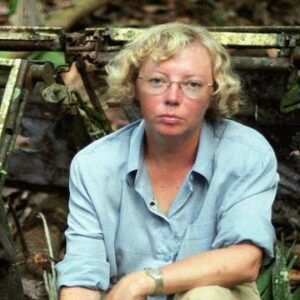Juliane Koepcke is a German-Peruvian biologist who was the lone survivor of the ill-fated LANSA Flight 508 that crashed in the Peruvian rainforest on December 24, 1971, killing all 92 passengers and crew members. Juliane Koepcke had no idea that taking the LANSA trip with her mother to see her father for Christmas celebrations in 1971 would be a watershed moment in her life. It would not only be her mother’s final journey, but also the most tortuous, leaving her in excruciating bodily pain as well as emotional and mental anguish. Juliane dubbed the ‘Girl Who Fell From the Sky,’ not only survived a plane accident, but she also lived long enough to recount the story of her incredible adventure. She endured not only the extreme weather but also different hazardous critters such as bats, bugs, jaguars, scorpions, snakes, piranhas, and alligators, all alone in a white little dress, one sandal, and a pack of sweets. Fortunately, her prior experience living in the wild as a child working in her favor. Her parents had instilled in her a deep understanding of the ‘green’ world. She was able to persevere because of her knowledge and experience. The narrative of Koepcke is one of bravery, courage, heroism, resilience, and persistence. Her determination to reunite with her father and her strength of character kept her going.
The Ascension to Stardom
Not everyone who becomes famous does so in the traditional sense; some people achieve fame and recognition in the most terrible of circumstances. Juliane Koepcke is one of those people. On Christmas Eve of 1971, Juliane and her mother, Maria Koepcke, traveled to Pucallpa to see her father.
The weather outside unexpectedly worsened while the jet was in the air. They dashed into a massive rainstorm, which was followed by a bolt of lightning. Everything went black, and the plane plummeted into a nosedive a few moments later.
Juliane realized she was out of the plane in a matter of seconds, still strapped to her seat, and on her way to a freefall upside down in the Peruvian rainforest, the canopy of which served as a green carpet for her.
Koepcke lost consciousness almost immediately after the fall. When she awoke the next day, she recognized the gravity of the situation. She suffered only a broken collarbone, a laceration on her right arm, and a swollen right eye after surviving a plane accident. She anxiously searched for her mother with her corpse in her hands, but in vain.
Juliane Koepcke came across a stream while searching for her mother or any other survivors. Moving downstream in search of civilization, she hiked for nine days in the thick rainforest’s small stream, enduring insect bites, hunger aches, and a depleted physique.
Juliane eventually discovered a boat tied to a shelter on the side of the creek on the eighth day. She was ecstatic at the sight, as it was her last hope of reuniting with civilization soon. The crew arrived at the boat hours later and were taken aback when they saw her. As they treated Koepcke’s wound and fed her, they appeared to be God-sent angels.
They then took her on a seven-hour canoe voyage down the river to a lumber station, where she was airlifted to Pucallpa to see her father.
Julian Koepcke’s extraordinary survival earned her worldwide acclaim. She had no idea that the time she was overcoming adversity to reunite herself with civilization was also the moment she was immortalizing her existence, for none of the 92 passengers and crew members on board the LANSA flight survived to save her.
Second-degree burns, a ruptured ligament, a shattered collarbone, a swollen eye, a severely damaged arm, and an exasperatedly fatigued body — nothing could stop her. She relocated to Germany, where she fully healed from her injuries, both physically and mentally.
Juliane Koepcke’s autobiography, ‘Als ich vom Himmel field (When I Fell From the Sky), was published on March 10, 2011, and it detailed her miraculous survival, her 10-day attempt to escape the dense rainforest, and the obstacles she experienced alone in the bush.
In 2011, she was awarded the Corine Literature Prize for her novel. Susan Penhaligon made a film about Juliane’s experience called “Miracles Still Happen.”
Juliane’s Personal Experiences
Juliane Koepcke was born in Lima, Peru, on October 10, 1954, to a German-Peruvian family. Her father, Hand Wilhelm Koepcke, worked as a biologist at Pucallpa, while her mother, Maria Koepcke, worked as an ornithologist. Juliane Koepcke went to a German high school in Peru.
She earned her bachelor’s degree in biology from the University of Kiel in 1980. She earned a doctorate from Ludwig-Maximilians-Universität in Ludwigshafen, Germany, then returned to Peru to pursue mammalogy research, focusing on bats. In 1987, she published her thesis, Ecological Study of a Bat Colony in Peru’s Tropical Rainforest.
She is currently employed as a librarian at Munich’s Bavarian State Zoological Collection. In 1989, she married Erich Diller. He specializes in parasitic wasps.
Estimated Net worth
Juliane is one of the wealthiest zoologists and one of the most well-known. Juliane Koepcke’s net worth is estimated to be $1.7 million, according to Wikipedia, Forbes, and Business Insider.


